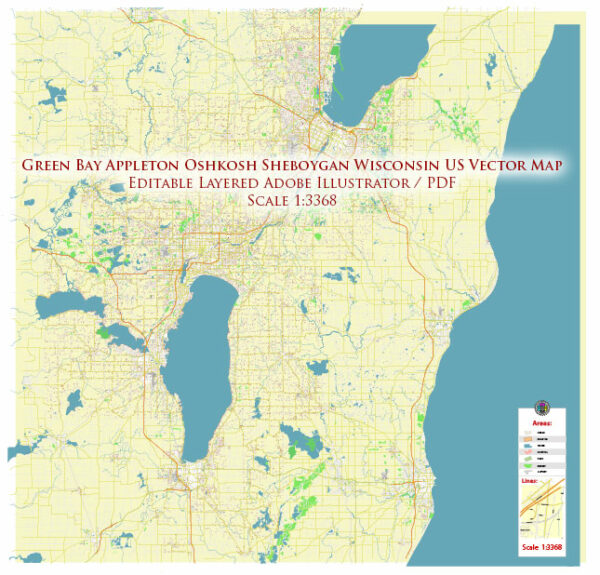Green Bay and Sheboygan are two cities in Wisconsin, USA, each with its own unique history of urban development.
Green Bay: Green Bay is the oldest city in Wisconsin, with a history dating back to the 1600s. It was originally inhabited by the Menominee and Winnebago Native American tribes. The area became a center for fur trading in the 17th century, attracting European settlers.
- Fur Trading Era: The fur trade played a crucial role in Green Bay’s early development. Fort Howard, established in 1816, was a significant military post protecting the area and supporting fur trade activities.
- Lumber Industry: In the mid-19th century, the lumber industry boomed, and Green Bay became a major lumbering center. The growth of the city was closely tied to the exploitation of the rich timber resources in the surrounding area.
- Industrialization: As the lumber industry declined, Green Bay transitioned to manufacturing and industry. The city’s industrial base expanded in the late 19th and early 20th centuries, with paper mills, meatpacking plants, and other industries playing a vital role in its economy.
- Sports and Culture: Green Bay is perhaps best known as the home of the Green Bay Packers, one of the oldest professional football teams in the United States. Lambeau Field, the team’s iconic stadium, has become a symbol of the city.
Sheboygan: Sheboygan, situated on the western shore of Lake Michigan, also has a rich history of urban development.
- Early Settlement: The area that is now Sheboygan was originally inhabited by Native American tribes, including the Potawatomi. European settlers arrived in the mid-19th century, drawn by the fertile land and access to Lake Michigan.
- Sheboygan’s Harbor: The development of Sheboygan’s harbor was a crucial factor in its growth. The harbor facilitated trade and transportation, allowing the city to become a hub for shipping and manufacturing.
- Bratwurst Capital: Sheboygan has earned the nickname “Bratwurst Capital of the World” due to its strong German heritage. The city has a long tradition of sausage-making, and bratwurst festivals are popular events in the community.
- Recreation and Tourism: Sheboygan’s lakefront has contributed to its reputation as a recreational destination. The city has beautiful parks, beaches, and a boardwalk, attracting residents and tourists alike.
Both Green Bay and Sheboygan have evolved from their early roots in fur trading and agriculture to become vibrant cities with diverse economies and cultural offerings. The preservation of historical landmarks and the adaptation of their urban landscapes to changing economic realities reflect the resilience and adaptability of these Wisconsin communities.


 Author: Kirill Shrayber, Ph.D.
Author: Kirill Shrayber, Ph.D.